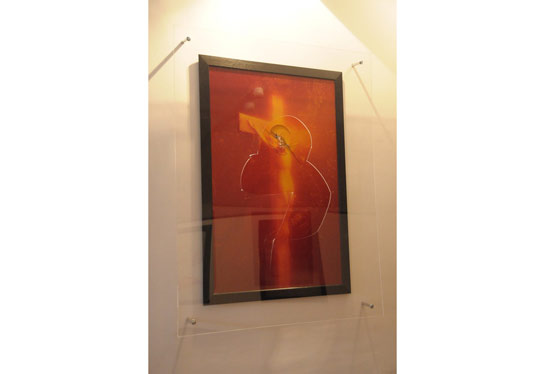It takes a Senator

On September 11, 2001, Artist Laurel Nakadate put on a Girl Scouts uniform and took photographs of herself while the World Trade Center towers were burning and then collapsing in the background. The resulting photographs (I can’t find the one where she is saluting) are not particularly profound or interesting. But neither is taking a crucifix, submerging in your own urine (any yellow liquid will probably do as long as you call it “piss”), and then taking a photograph of it. All it takes to take the latter into an important piece of art, while the former still languishes in the kind of obscurity it probably deserves, is… no, not an art critic. It take an American Senator. In the case of Piss Christ, the photograph of the submerged crucifix, it was ultraconservative Senator Jesse Helms who used Andres Serrano, the maker of Piss Christ, as an example of what’s supposedly wrong with using tax payer dollars to support artists. Needless to say, Serrano’s work immediately became important art, because that’s part of the art business works. (more)
You don’t have to be a Christian to realize that the image of the crucifix in urine is offensive to a lot of people. You also have to be honest with yourself for just a minute to be able to admit that that is the sole point of Piss Christ: to raise a ruckus by offending people. Of course, you could convince yourself that the photograph raises more fundamental questions about, for example, Christianity and how we treat it etc. I might be inclined to listen to that if Serrano’s other work didn’t center on shit (no really), the Ku Klux Klan, and corpses. It looks to me as if someone was looking for easy, simple ways to offend people. I’m just saying.
But even if we believe that Piss Christ is not just about pissing off Christians, we have to take into account that it does. That makes the piece controversial. And controversies are great, because they create headlines, and headlines result in sales. Of course, there are some controversies that are interesting, and many (most?) that are not. The Piss Christ one obviously is not interesting. You can poke as much as you want, but at the end of the day it’s really just about offending the beliefs of a large group of people. That, for me, does not constitute what it takes to create a great piece of art.
Needless to say, I also don’t advocate the destruction of these images. Unless you live under a rock you probably heard that the other day, a couple of people tried to destroy the Piss Christ photograph, currently on display at a museum in France. Here’s a story about the incident, where I also found the photo (you could easily see this post getting republished with a few changes).
See, here’s the thing. I’m not fundamentally opposed to creating a photograph like Piss Christ and hanging it in an art gallery. The freedom of art gives everybody the right to do that. But I also realize that it’s a deeply offensive piece of art for many Christians, and it’s such a meaningless provocation. There’s not a lot of thinking in it.
As I said, I am opposed to destroying pieces of art, for a variety of reasons (incl. the fact that that puts you in very bad company, just looking back at recent history). That’s not acceptable to me.
But I can’t get riled up about this event. In fact, it’s so predictable that it’s not even the first time someone tried to destroy Piss Christ. So maybe instead of huffing and puffing about this we do something else: Why don’t we just admit that, of course, someone would find Piss Christ so offensive that they would want to destroy it. Isn’t the undestroyed photograph somehow incomplete? I read somewhere that the museum in France intends to display Piss Christ in the state it is depicted in the photo, and that makes perfect sense. Shown that way, it suddenly acquires a somewhat more profound meaning than before. Before, it was a very obvious and trite provocation of Christians. Now, it’s a commentary on both the kind of discourse we have been having in our Western societies - getting ever more provocative and extreme (with a lot of religion in the mix); and it puts how parts of the art world work on display, namely by creating cheap and obvious controversies.
Maybe I’ve been reading too much Slavoj Zizek, but I’m almost tempted to think of Piss Christ as a piece of performance art in three parts: Part one, the making. Part two, the hanging in a public space. Part three, the inevitable destruction.
As I said, I am fundamentally opposed to the destruction of pieces of art. What bothers me about all of this is that at no point did we deviate from the script. Everything is so predictable. A provocative piece of art, attacked by a conservative Senator, the art world rushes to defend the piece and thus makes it much more famous (and expensive) than it would have been, and various people have tried to destroy copies of the photo, with the art world, - again! - circling the wagons around it.
Don’t we want to break out of this? Isn’t art about something bigger, something grander than that?
PS: Don’t miss Ann Althouse’s 11 thoughts about hammering “Piss Christ” into destruction